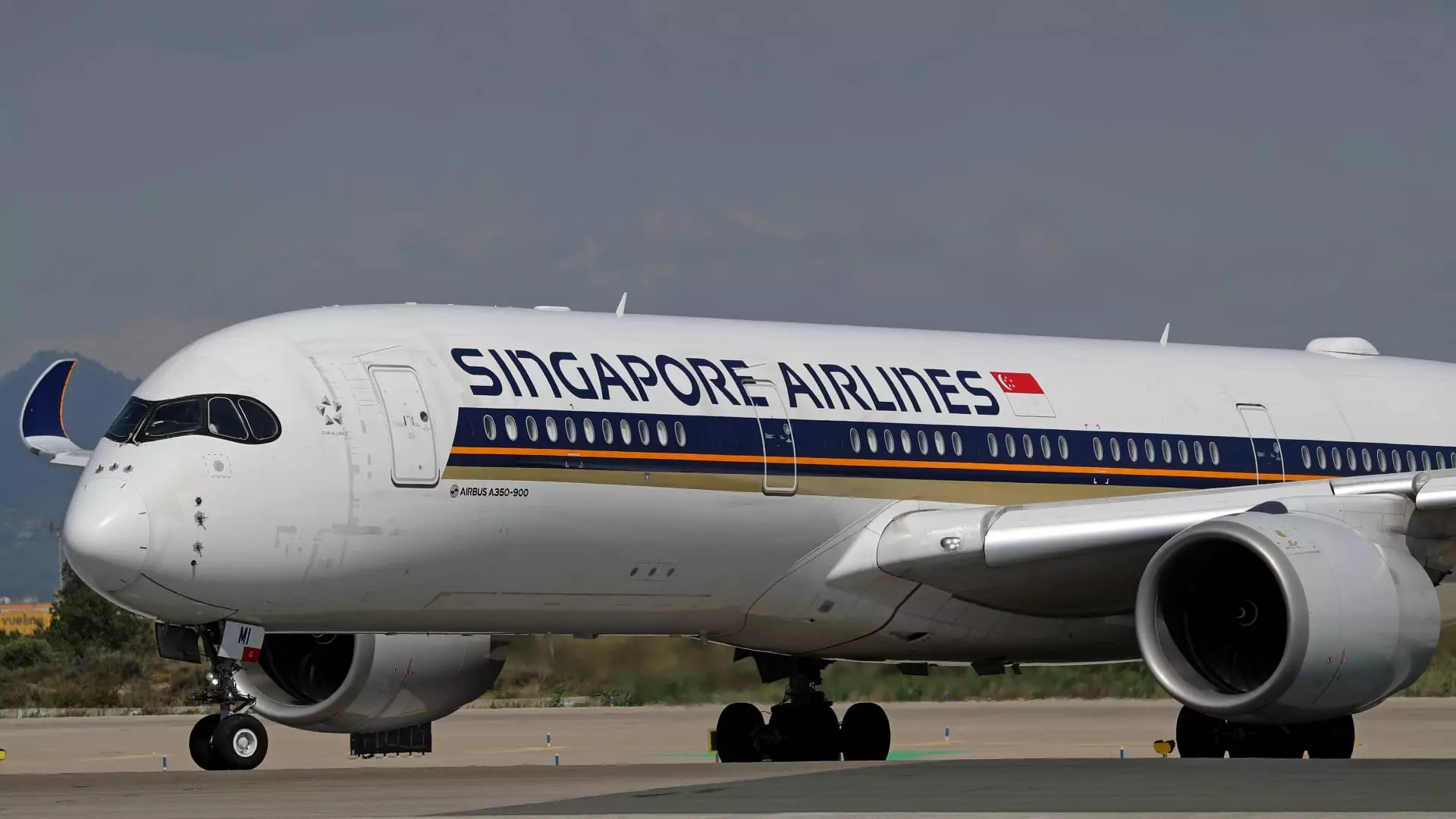Singapore Airlines (SIA), the bustling flag carrier of the city-state, is facing a challenging fiscal landscape as evidenced by a significant drop in net profit for the first half of the fiscal year running from April to September. The company reported a net profit of 742 million Singapore dollars, marking an alarming 48.5% decline from the previous year’s figure of SG$1.44 billion. This decline has directly impacted investor confidence, leading to an initial drop in share prices by as much as 6.2%, before slightly recovering. This situation calls for a closer examination of the factors contributing to such disappointing results.
Revenue Growth Amidst Operational Challenges
Interestingly, despite the dramatic fall in profits, Singapore Airlines managed to achieve a 3.7% increase in revenue, reaching SG$9.5 billion. This paradox suggests that while the airline’s top line appears strong, underlying operational issues are severely affecting profitability. The operating profit also dropped by an almost equal measure, down 48.8% to SG$796 million. The airline attributes this sharp decline to an influx of capacity in response to heightened competition in vital markets, which has led to falling yields—essentially the revenue earned per seat, an essential metric for assessing an airline’s financial health.
During an earnings briefing, SIA executives expressed their concerns about the resurgence of competitive pressure as other airlines ramp up their operations back to pre-Covid levels. Chief Commercial Officer Lee Lik Hsin emphasized that despite these challenges, Singapore Airlines would not restrict its capacity growth merely due to competitive dynamics, indicating a commitment to long-term strategic expansions rather than short-term avoidances. The delicate balance between increasing operational capacity and managing profitability seems to be at the forefront of SIA’s strategic considerations as it adapts to the changing transportation landscape.
On one hand, Singapore Airlines is witnessing a 7.9% year-on-year increase in passenger traffic, which is a positive sign indicating a recovering appetite for air travel. However, this growth in passenger numbers has not kept pace with the company’s 11% increase in capacity, leading to a slight drop in the passenger load factor. This discrepancy raises important questions about future routes, capacity management, and overall operational efficiency as the airline seeks to optimize its offerings to meet market demand.
Looking ahead, SIA is bolstering its strategy with a substantial SG$1.1 billion cabin retrofit program for its fleet of Airbus A350 jets, aimed at enhancing customer experience. While the company anticipates robust demand for air travel in the latter half of the fiscal year, the competitive landscape is expected to persist. The retrofit program, which is slated for completion by 2030, reflects SIA’s dual strategy of embracing innovation while solidifying its position within a fiercely competitive airline industry.
While Singapore Airlines demonstrates resilience through its revenue growth and strategic planning, the combination of fierce market competition and operational challenges raises critical questions about the company’s profitability moving forward. The steps taken now will determine whether SIA can navigate these turbulent waters effectively.


Leave a Reply